Comprehensive Analysis on Frictional vs. Structural Unemployment
Structural and frictional unemployment are two forms of unemployment that are notably notable in the field of labor economics. Despite their distinct characteristics and consequences, both factors are equally critical in determining the operation of the labor market. This blog will provide an in-depth examination of frictional and structural unemployment, including their distinctions, causes, and economic repercussions.
Understanding the meaning of Frictional Unemployment
Frictional unemployment is the term for transitory unemployment that occurs while people are between jobs while they transition from one work opportunity to another. When people actively search for new work opportunities or make their first career change, it’s widely seen as a normal and inevitable aspect of a dynamic labor market. Frictional unemployment may arise in the interim while searching for suitable work. In India, where the labor market is dynamic and diverse, frictional unemployment is a problem that affects many different industries and businesses.
Understanding Structural Unemployment
On the other hand, structural unemployment is the outcome of a mismatch between the skills and credentials of the labor force and the available job opportunities. Unlike frictional unemployment, which is temporary, structural unemployment usually has a longer duration and is systemic in nature. It results from deep structural shifts in the economy, encompassing shifts in industry demand, consumer preferences, and technological advancements. In India, structural unemployment is more prevalent in industries that are undergoing rapid technological development or structural changes as a result of automation and globalization.
Differentiating Between the two
Both structural and frictional unemployment affect people without jobs, yet they differ in terms of duration and underlying causes:
- Causes: Frictional unemployment arises from job search, regional mobility, and skills mismatch, while structural unemployment stems from substantial economic changes like technological advancements or shifts in industry demand.
- Duration: Frictional unemployment is temporary, resolving itself when individuals find new job opportunities, whereas structural unemployment can persist for an extended period, necessitating significant structural changes or policy interventions for resolution.
Causes of Frictional Unemployment: Exploring the Factors at Play
- Work Search: The time it takes for people to seek out and accept acceptable employment prospects is one element that contributes to frictional unemployment. The duration of the job search process may differ based on personal preferences, geographic mobility, and employment opportunities.
- Geographical Mobility: If an individual is unable or unwilling to relocate in search of employment, their job search may take longer than expected, leading to frictional unemployment.
- Skills Mismatch: A mismatch between job seekers’ talents and what firms want in terms of skills can lead to frictional unemployment. To remain competitive in the employment market, people may need to undergo training or acquire new skills as industries and technologies advance.
- Seasonal and Cyclical Factors: Frictional unemployment may also be impacted by cyclical downturns in the economy or seasonal fluctuations in the demand for specific labour types. When there are job shortages or economic instability, people may experience frictional unemployment for longer periods of time.
Examples of Frictional Unemployment in India
Frictional unemployment is common in several industries and sectors in India. As an illustration:
- IT Industry: People who move between positions or businesses in quest of greater prospects may encounter frictional unemployment in the quickly changing IT sector.
- Manufacturing Sector: Due to variables like job searching, skill mismatches, or shifts in industry demand brought on by technological improvements, workers in the manufacturing sector may experience frictional unemployment.
- Services Sector: This sector is also susceptible to frictional unemployment, especially in high-turnover and frequently changing job areas like retail, customer service, and hotels.
Understanding its Effects
Frictional unemployment can affect people, companies, and the economy overall in a number of ways.
- Individuals: Those who experience it may experience short-term income loss and financial instability. On the other hand, it also offers chances for professional growth, skill expansion, and job search investigation.
- Businesses: When companies try to fill open positions, frictional unemployment can lead to higher recruitment expenses and lost productivity. It does, however, also make room for the entry of new workers with innovative ideas.
- Economy: Frictional unemployment promotes the flexibility and dynamism of the labor market in the larger economy. In the end, it encourages innovation, productivity, and economic progress, even though it could cause temporary inefficiencies like mismatches between job postings and job searchers.
Solutions to Address Frictional Unemployment
- Improving Job Matching: By making job matching platforms and services better, job searchers can find appropriate employment prospects faster and spend less time looking for work.
- Encouraging Geographic Mobility: Relocation aid programmes and incentives can help promote geographic mobility, which in turn can ease job transitions and reduce frictional unemployment stemming from geographic limitations.
- Investing in Skill Development: Upskilling or reskilling the workforce through education and training programmes can solve skills mismatches and enhance labor market results.
- Reducing Information Asymmetry: Educating job seekers on career paths, skill requirements, and job opportunities can help them make better decisions and speed up the job search process.
Conclusion
To sum up, structural unemployment and frictional unemployment are two different but related facets of the labor market. Temporary job shifts characterize frictional unemployment, while deeper structural shifts define structural unemployment. Policymakers, companies, and individuals can address both types of unemployment through targeted solutions and policies to foster a more resilient, inclusive, and dynamic labor market.

